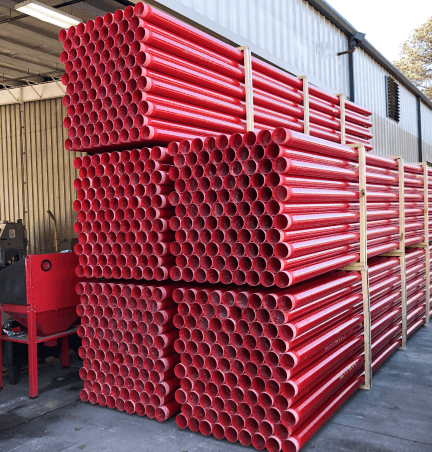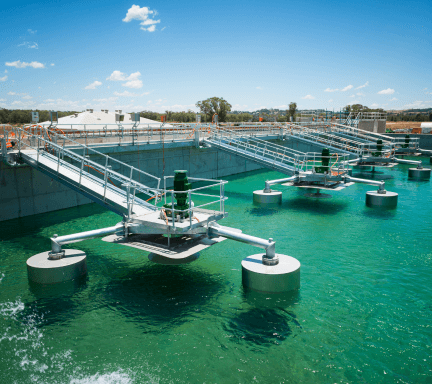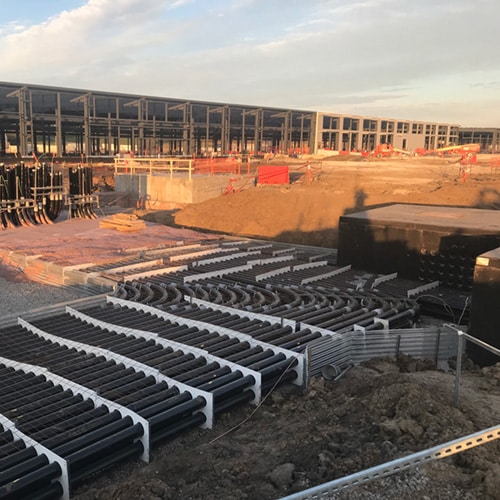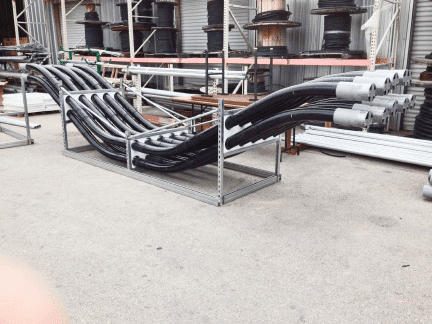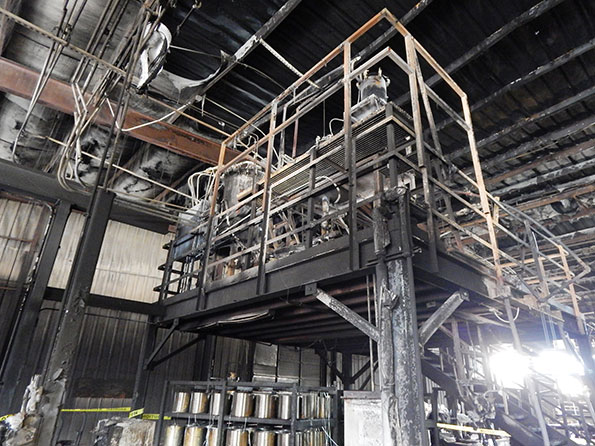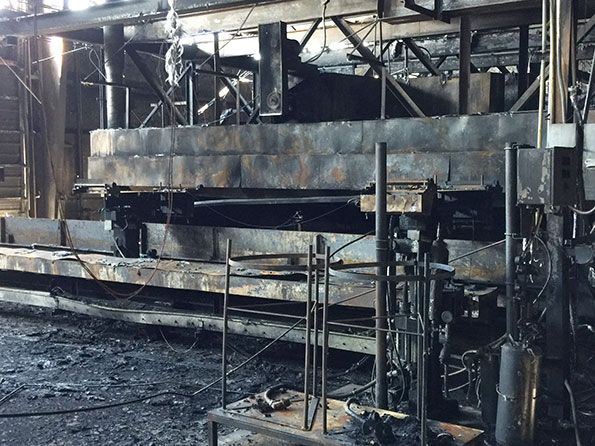Fire Recovery in Record Time
Dec 6, 2016 By Pete Rosser, Vice President, KenMor Electric | Electrical Construction and Maintenance
When a devastating fire in March 2016 caused major damage to the main manufacturing facility of Champion Fiberglass, a Houston-based manufacturer of fiberglass electrical conduit and strut, a comprehensive plan was developed to get the company back up and running as quickly as possible. Critical to the effort was engaging an electrical contractor that could address the many challenges faced by the destruction, provide temporary and then permanent power solutions, and coordinate with other onsite contractors. The main concerns were safety, speed, and the ability to provide a new integrated electrical system for the entire facility.
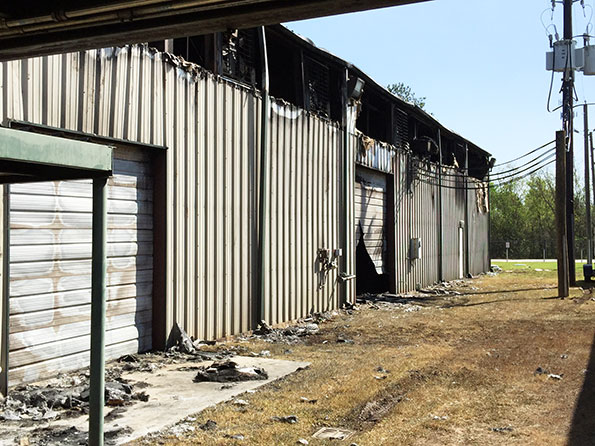
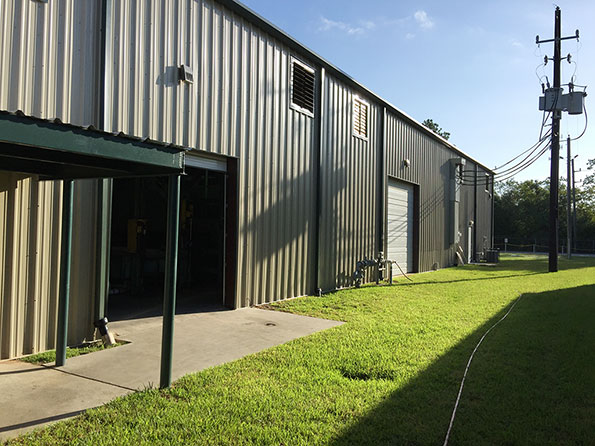
KenMor Electric Co. in Houston was selected as the primary contractor and was immediately faced with the first challenge: working around the damage and developing a thorough yet fast plan of action.
“I had complete confidence that KenMor could deliver a completely new electrical system that would make our facility the most advanced in the industry,” said Goran Haag, CEO and owner of Champion. “It was very important to me that a plan be developed and that it be executed quickly and safely so we can get back to serving our customers and delivering their orders. The KenMor team was motivated to help.”
Ken Hengst, project manager of KenMor, described the destruction and challenge of the rebuilding effort.
“We were not prepared to see such horrific devastation, and the stench of burnt equipment was very intense,” said Hengst. “Perhaps even more disconcerting was the setback it caused the company that was clearly expressed on the faces of everyone there. They wanted to get back to work, and it was a personal and heartfelt commitment from the team that rebuilding the electrical system would be swiftly and safely executed.”
The facility has two production lines. It was anticipated by many that it would take two to three months to repair one of the lines, while the other line required an additional two months of restoration work. The maintenance shop and office were not damaged but required electrical power to function.

First, the KenMor team had to discern how to handle the interior electrical construction without buildings to support conduits and racks. They also had to develop a system to identify the burnt components — everything from motors, switches, levers and more — so they could create a rebuilding plan and timeline. That’s when the team had a “white board exercise,” literally starting with a clean slate, to develop a comprehensive and thorough plan. All of the contractors met weekly to discuss the project, address any concerns, and to assure all safety and operational issues were addressed and resolved during this fast-paced restoration.
KenMor superintendent Neil Bond was the project supervisor in charge of the “big picture” to assure equipment delivery and installation work was coordinated around the cleanup and rebuild work taking place.
“Because of our commitment to get Champion back in business quickly, there was much going on at the same time,” said Bond. “It was like conducting a big event, with suppliers arriving and leaving at the same time as designs were being completed and installation was planned. We did whatever was needed every day, even if that meant shoveling some debris to clear an area.”
Haag decided to upgrade the power system so the new facility would have the most advanced electrical infrastructure, be in complete compliance with the National Electrical Code, be very safe, have efficient LED lighting and state-of-the-art sprinkler and fire alarm systems with two-hour fire-rated walls between production areas, and include automatic roll-down doors containing fire-activated closing mechanisms.
Temporary power generation and lighting were installed during the salvage and clean up phase. Then it was important to get the office building off generator power because it was causing problems with the company’s computer system. A 1,200A temporary service was built to accommodate the office load, provide power to the maintenance shop, and to provide sufficient capacity to start one of the production lines.
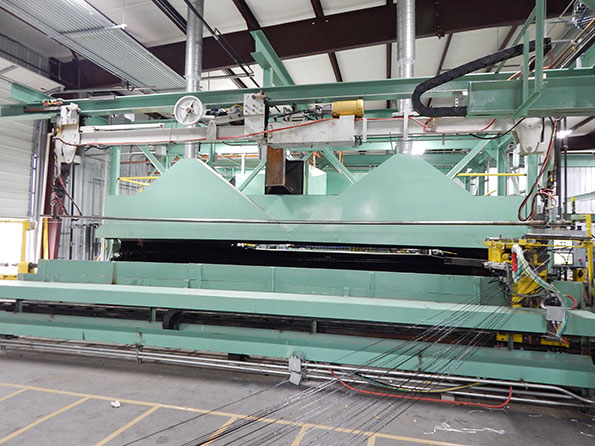
To make matters worse, the project began just before Houston experienced several major storms that resulted in area flooding. While the Champion facility itself was not flooded, the surrounding streets were impassable. Contractors were unable to get to the site, and much of the equipment was exposed to the elements. This created an additional cleanup and evaluation phase of the project. But the team recovered from the setback by working overtime to get back on schedule.
Coordinating with the electric utility, the next step was to install temporary power poles to allow the manufacturer to use utility-supplied power instead of temporary generator power. That was a huge step in the rebuilding effort because it enabled clean power to the machine shop and power to the two manufacturing lines. KenMor then completed the electrical work for both production lines utilizing 2,400A main power.
Demolition of the main 45,000-sq-ft production facility started after two weeks and was done in two phases to allow uninterrupted reconditioning and electrical work to continue in part of the production line area.
“At this time, it was even more critical to coordinate timing of the electrical work to support the rebuilding and installation of new structural steel,” said Hengst. “We were also working with the engineering company that designed the electro-mechanical automation and control systems for the fiberglass processing process to assure it received the power needed for high performance.”
Hengst describes the process as choreography between his team and the process engineers — and it worked. One of the production lines was up and running ahead of schedule, which enabled the manufacturer to begin fulfilling customer orders sooner than expected. Although it took an additional six weeks to get the other production line up and running, it was also completed ahead of schedule.
“The main take away from this ordeal is to engage an electrical contractor capable of meeting your goals and then communicate regularly,” said Haag. “Our contractors not only talked to us, but with each other so that in the end, all the pieces fit together.”
Haag quipped that Champion Fiberglass rose from the ashes like a Phoenix and today has a more advanced production facility for the manufacturing of its fiberglass conduit.
Original article published in EC&M “Fire Recovery in Record Time”








